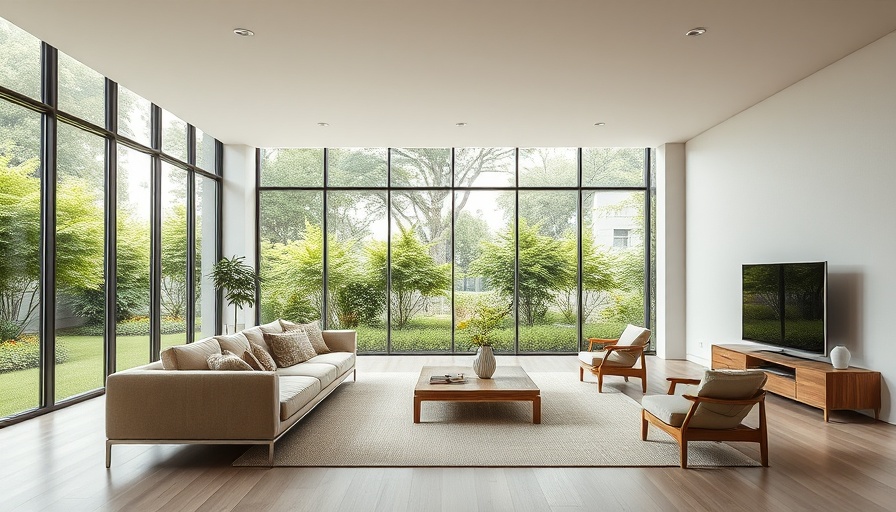
Reimagining Spaces: Discovering the House of Gills and Its Impact on Remote Work
In an era where digital nomadism is on the rise, the intersection of comfort, efficiency, and aesthetics in home design plays a crucial role in achieving productivity. One remarkable example of innovative architecture is the House of Gills, designed by Bratislava-based Beef Architekti to embody the fluidity and adaptability of nature. This unique residence, inspired by fish gills, invites not just breathability into its structure but also enhances the lifestyle experience of its inhabitants. As we dive into its design, we explore how such architectural marvels can set the stage for creating ideal remote workspaces.
Breathability and Design
The House of Gills features a series of freestanding concrete slabs resembling fish gills, strategically positioned to allow natural light and air to flow through the home. This thoughtful design facilitates a sense of openness while maintaining privacy. The analogy of the gills serves as a reminder of the importance of providing a breathable living environment, which is vital for digital nomads who seek comfort while working from home. It enhances aiming for optimal productivity by allowing a seamless connection with nature, fostering inspiration and creativity.
The Green Atrium: A Core of Wellness
At the heart of the House of Gills lies a vibrant green atrium that creates an inviting indoor garden space. This inner jungle, inspired by the surrounding Carpathian landscape, is not merely an aesthetic feature; it also acts as a natural air purifier and a calming element. For those working remotely, access to nature can reduce stress levels and improve focus, making this design choice essential for enhancing the workspace environment.
Maximizing Light and Efficiency
The carefully planned layout of the home maximizes natural lighting, demonstrating how architectural decisions directly influence daily routines. For remote workers, effective lighting can enhance mood and concentration. The openness of the living space, arranged around the atrium, enables dynamic interactions with both the interior and the exterior. Roof overhangs further contribute to energy efficiency by minimizing sun exposure in the summer while allowing sunlight to warm the interior in winter. This clever design not only complements the functionality of living spaces but also creates a comfortable backdrop for remote work.
Strategic Outdoor Spaces for Work-Life Balance
With individual terraces for each bedroom and an expansive outdoor dining area equipped with a sunken pool, the House of Gills promotes a perfect work-life balance. These outdoor spaces can serve as productive quarters for those seeking a change of scenery. Being able to work outside amidst nature enhances creativity while providing a refreshing respite from long hours at a desk.
Architectural Elements Supporting Productivity
The materials selected for the House of Gills also align with its wellness focus. Utilizing light-colored finishes and wooden elements results in a soothing atmosphere, essential for maintaining a positive workspace. Digital nomads can take cues from this to create their own ergonomic workspaces at home, ensuring the integration of natural elements and aesthetic harmony, potentially boosting productivity levels.
As we investigate the implications of the House of Gills, it's evident that innovative architecture has the power to significantly influence remote work environments. Understanding these design principles can guide digital nomads in creating spaces that not only foster productivity but also enhance overall wellbeing. Embracing the lessons learned from this architectural marvel may inspire individuals to rethink their workspace at home, prioritizing elements such as natural light, ventilation, and a connection with nature.
Conclusion: Design Insights for the Future of Work
For digital nomads looking to optimize their remote working environment, the insights drawn from the House of Gills can serve as a stepping stone. By focusing on breathability, natural elements, and dynamic spaces, creating an ergonomic and aesthetically pleasing workspace becomes achievable. As design continues to reshape the way we live and work, let the principles found in this unique Slovakian residence inspire your journey towards a more comfortable, efficient, and fulfilling remote work experience.
 Add Row
Add Row  Add
Add 




Write A Comment